The circuit below is meant to attenuate a high output and high output impedance piezo electric guitar bridge pickup -7 dbV. The circuit models both the pickup output impedance and load of the cable capacitance with amplifier input impedance. In Circuit Lab the simulation is exactly how I would like it. While I have not actually measured the FR yet, the real world result is about -15db overall and cutting out LF to have a tinny sound. The first thing I checked was the integrity of my connections but all looks good.
Question: Before I go down a bunch of rabbit holes, is there an obvious practical issue with the design of my circuit causing this, or anything that sticks out that I should investigate?
While I am now testing this inverting attenuation circuit on its own, in the end it is intended to be the piezo only input of a complete active guitar preamp as shown below where the other circuits are working as intended. I have tried using resistive voltage divider attenuation to do this feeding into a common OA1 scenario but I have not been happy with the results. The high output Z is very hard to attenuate without affecting the sound. Attenuation is a must here, no amp out there can take the signal without clipping. Why Fishman made such a beast is beyond me.
Note: Using the following parameters in Circuit Lab for the OPA134:
Thanks so much for any tips :)
